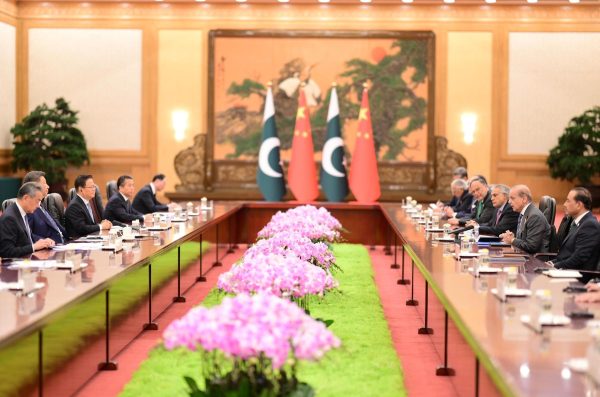It is no secret that CPEC has failed to achieve its set goals on time. But is China to blame – or Pakistan itself?
During the second Pakistan-China B2B Investment Conference, held on the sidelines of the Shanghai Cooperation Organization (SCO) summit in Tianjin, Pakistan’s Prime Minister Pakistan Shehbaz Sharif formally announced the launch of China-Pakistan Economic Corridor (CPEC) Phase 2, also known as CPEC 2.0.
CPEC has been a cornerstone of China-Pakistan relations for more than a decade. For Beijing, it was a strategic gamble to avoid the infamous Malacca dilemma; for Pakistan, it was considered an economic “game changer.” Thus, both Beijing and Islamabad viewed CPEC as a win-win initiative. However, the West, led by the United States, labeled CPEC as an example of “debt trap diplomacy,” portraying China as an exploitative power, hiding its geopolitical goals under the guise of infrastructure diplomacy.
It is no secret that CPEC was unable to achieve its set goals as per the timeline at the time of its inception. However, it would be wrong to point to a supposed “debt trap” as the primary reason. As CPEC is entering into the second phase, it is critical to understand Beijing’s development finance model vis-à-vis CPEC’s first phase and Islamabad’s management of CPEC finance. Only then we can truly understand China’s role in Pakistan, whether as an exploitative or benevolent power.
The Long March to CPEC 2.0
CPEC, termed as the Belt and Road Initiative’s (BRI) flagship project, was formally launched in 2013. Initially, CPEC’s projects amounted to $46.5 billion; however, with time its scope was broadened and now total investment under CPEC has reached $62 billion.
The initiative promised to give much-needed economic impetus to Pakistan but quickly entered uncharted waters and became mired in countless controversies. Thus CPEC has very few outcomes to showcase.
As initially conceived, CPEC is divided into three phases: the short-term phase (2015-202
Continue Reading on The Diplomat
This preview shows approximately 15% of the article. Read the full story on the publisher's website to support quality journalism.
